Please feel free to interact with the map below by clicking on the
individual College / University pins, zooming in (Plus Sign) and zooming out (Minus Sign.)
individual College / University pins, zooming in (Plus Sign) and zooming out (Minus Sign.)

Alabama - Moonhoppers
Multiple mobile robotic collaboration towards mission completion plays a central role in the space exploration. As current NASA MINDS undergraduate student competition project towards exploration visions, we chose a group of artificially intelligent planetary robotics which carry out the smart path generation during navigation based on the deep q-learning method. This work has tremendous potential for space exploration, allowing for reduced cost, increased flexibility and increased reliability. The project adopts the Microsoft RL visualization technique, AirSim, to perform the hardware-in-the-loop implementation and observe the complex performance.

Albany State University - Ram Robots
This project uses Lidar and a triangulation algorithm to detect craters on in the Moon and on Mars in preparation for the Artemis Mission. Once the rover detects a Crater, it stops and takes pictures of it and notifies Command and control of its findings. The rover will detect Craters and measure Crater height, diameter, location and surrounding data in order to determine if the Rover can make turns and maneuvers to avoid the crater or stop. We will use IBM Watson Deep Learning AI algorithms to analyze and classify images in order to assist automatically identify future objects.

Bunker Hill Community College - B.R.I.C.S
When NASA returns to the moon with Artemis, compromises must be made regarding the equipment that will be launched to support astronauts in their missions. The novel Blocks of Regolith for an Innovative Construction System (B.R.I.C.S.) will maximize the utilization of in-situ materials for construction. Modularity will allow for habitats, launchpads, and other structures. We will design a lightweight and durable encasement, and machinery to load it with lunar dust. This composite will use high tensile strength materials so that blocks will perform well in compression without the need to form a concrete analog.

California State Polytechnic University Pomona
Our goal is to provide a common platform that can generate various S-curve motion profile orders depending on an application's needs. Our platform will be able to be integrated into different robotic applications to forgo users having to work with different brand user interfaces for similar device needs. We are proposing a platform to host users’ motion profiles whether they need it for conveyor belt delivery or multiple degrees of freedom robotic arms while being able to interchange what profile they might need at a given time.
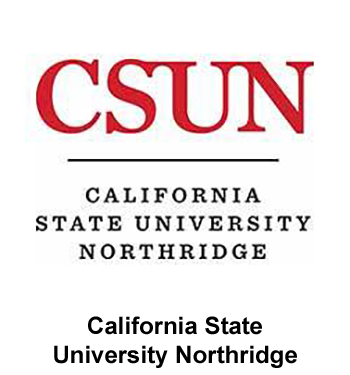
California State University Northridge - CSUN American Society of Mechanical Engineering
The purpose of the project is to develop a robot that has the ability to work with other robots in swarms to traverse the surface of a spacecraft and do ultrasonic nondestructive testing (NDT) of surface components and structural components made of composite materials. This will help the Artemis program safely reuse space vehicles and promote sustainability. The robots will have limited autonomous capabilities and can be controlled via remote control. It can travel across all surfaces up to vertical angle to perform the NDT anywhere on the surface. Two robots will be manufactures to test and demonstrate the idea.

California State University Fresno - The Bulldog Cockpit
The goal of this project is to implement a fully immersive virtual reality based cockpit and compare different graphical design approaches in glass cockpit for organizing controls. The NASA's Artemis mission will require higher cognitive efforts, which potentially result in increased human error rates. People are subjects to errors when performing long tedious tasks that require continuous attention, in an environment that pushes human abilities. Deep space transportation systems, such the Orion spacecraft require enhanced user interfaces and visual display that can be efficiently operated in a large number of situations.

California State University Los Angeles - Cryo-Swarm Team
The Cal State LA Cryo-Swarm Team will develop a new robotic swarm technology platform for lunar surface exploration related to In-Situ Resource Utilization (ISRU), that directly supports the NASA Artemis Mission objective of returning astronauts to the moon and the establishment of a sustainable presence there, i.e., a Lunar Base Station. The objective of the Cryo-Swarm Team task is to design a cryogenically rugged SpyderBot, i.e., Cryo-SpyderBot that could perform different tasks such as observations, In-Situ soil chemistry measurements, lunar prospecting, and terrain mapping, all in coordination with other robotic platforms at the lunar surface.

Clayton State University - Laker C-Engines
Our project contribution aids in one of the major fundamental infrastructure needs of the Artemis Mission, communications. With the Lunar Gateway playing a major role in supporting the science missions and lunar-earth communications. We will provide research that ensures its success. Through the use of machine learning, we will demonstrate the importance of cognitive communications for over-the-horizon lunar surface communications, RF noise/interference mitigation, and earth to moon satellite network optimization.
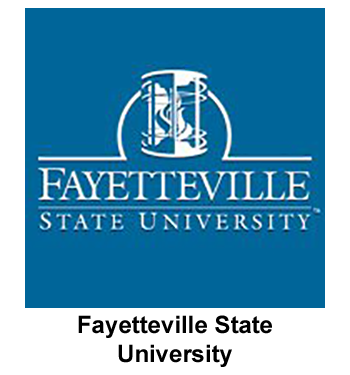
Fayetteville State University - FSU CSAM
This project will develop algorithms for swarm robotic sensing inspired by NASA’s Artemis Mission to create more “shape aware” local interactions and the emergence of desirable collective behaviors. The shape awareness of the swarm robots could lead to the discovery and mapping of lunar lava tubes. Such discoveries would be essential to the longevity of human exploration on the moon. The algorithms developed in this project will help robots detect surrounding objects in the environment such as lava tube walls and openings in those walls, and to distinguish other robots from these environmental features.
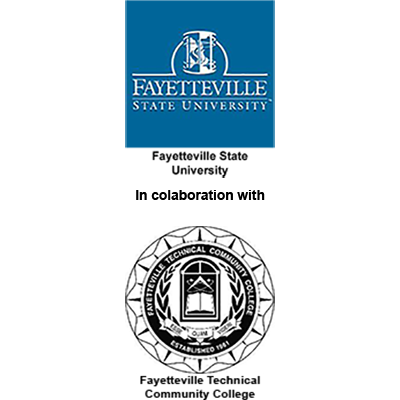
Fayetteville State University in collaboration with, Fayetteville Technical Community College - B3 - Blue Bronco Bots
As part of an existing MSTAR grant, the Fayetteville State University Bronco Blue Bots (B3) team is working to develop a mesh positioning model using Ultra-Wide Band (UWB) technologies and Artificial Intelligence (AI). The NASA MINDS component will include the use of drones to simulate satellite overflight of the arena, both providing UWB data to the ground and recording data from the robots. Data gained from the overflight will be used to reduce positioning errors across the robotic swarm. This directly supports the Artemis program by enabling accurate, automated exploration and resource location on the lunar surface.

Florida International University - FIU Astroglades
Our project will produce a controlled-environment hydroponic grow chamber with carbon dioxide generation for implementation in NASA’s Artemis space colonization mission. The objective will be to reduce the need for additional resupply missions and reliance from Earth by providing astronauts with a nutrient-rich food source for future missions, creating a system that will effectively recycle excess carbon dioxide, and provide an effective system to generate oxygen. This design will accomplish both a degree of radiation resistance and high structural integrity given the lightweight parameters met for space travel.

Georgia Gwinnett College - APL
As a part of the Artemis mission, NASA and its affiliates are discovering scientific knowledge and developing technologies to create long-term inhabitable establishments on the moon. Our project titled “Exploring Ways to Improve Functional Properties of 3D Printed Material for Artemis Mission” pertains to researching technological and scientific ways to make durable 3D printed materials that are lighter, stronger, durable, and extend the applications of 3D printing for space-based activities. Our project will allow NASA to recycle, reduce carrying capacity, replace overly weighted objects, and aid in the preparation of custom parts for its space missions.

Georgia Gwinnett College - HAM - Handheld Artemis Monitoring
S.A.U.C.E stands for “Structural Analysis Using Contactless Evaluation.” The SAUCE device will house standard (color vision) camera monitoring capabilities, as well as thermal monitoring and wireless vibration monitoring capability. The standard camera will be used to visually detect cracks/deformities on Artemis structures or vehicles, the thermal camera will be used to monitor local hot and cold spots, and the vibration detection will pick up stress irregularities in the overall state of stationary structures by interfacing wirelessly with sensor networks on structures. All data readings can be transmitted to any Artemis network computer/database through a wired or wireless connection.

Georgia Gwinnett College - Lunar GGC
Lunar GGC team will design and build (i) a dust chamber to allow for fabricating dust particles of sizes similar to those on the Moon and Mars, and (ii) an electrostatic substrate to collect dust particles with the possibility of being deployed on the moon and on Mars to support the Artemis mission. Additionally, the team will analyze the dust particles using Atomic Force Microscope (AFM), UV-VIS-NIR spectrometer, and LS 13 320 XR particle analyzer. The team expects to use the results of the analysis to extract information relevant to chemical reactivity of particulates.
"
Inter American University of Puerto Rico Bayamon Campus - Atabey Inter Bayamon
The Artemis mission is seeking to expand horizons, to take the next woman and a diverse set of astronauts to the Moon. Our astronauts require essential tools in order to complete its tasks. As Atabey Latinas in STEM, we want to support NASA by designing and fabricating a lunar drill Rover and our design supports the Exploration Destination System Technology Area. Our drill will function to extract lunar regolith for further studies or application into systems. Our mission as a team is to provide a cost-effective solution and easy to operate system for our astronauts.

Lone Star College - CIDA
NASA’s Artemis Mission aims to create a habitable base on the south pole of the moon. Team C.I.D.A. was formed by students from Lone Star Cy-Fair to compete in the NASA Minds competition by developing a mechanical system that would aid NASA’s goals. The purpose of the proposed Lunar Surface Array Structure (LSAS) is to act as an expandable and retractable mechanism for the efficient deployment of solar arrays that will power NASA’s lunar base. Our design was made for both mobility by fixing it to a transportation device & for utilization of a linear actuator and its linear motion.

McMurry University - Moon Hawks
Artemis plans to land near the lunar pole, where some areas are in shadow. With sunlight and the solar wind blocked, there are few charge carriers available to dissipate electrostatic charge. Our team intends to investigate simple charge mitigation techniques that can be suit or rover mounted, such as conducting spikes or the evaporation of polar molecules from non-conducting surfaces. Since rigid metallic spikes are impractical and unsafe near astronauts, flexible spikes and conducting materials for suit exteriors, and spritzing water and sulfur hexafluoride on non-conducting materials will be tested in atmosphere and in a small vacuum chamber.

Montgomery College - Artemis Generation
Our project aims to develop helical anchor-based thermoelectric generators; we plan to integrate TEGs into a helical anchor to create a unified system of self-sustaining renewable power generation and structural support for civil structures on the moon, as foundations for a planned lunar colony. We aim to support, structurally and metaphorically, the later legs of the Artemis mission's Base Camp as it establishes and expands from a research station into thriving extraterrestrial habitation. Our TEG relies on three possible heat sources: the sun, radioisotopes, or waste heat from external processes, where we turn otherwise-wasted byproduct heat into usable electricity.

Montgomery College - The Cottontails Crew
Montgomery College's Lunar Dust Mitigation team plans to support NASA in their quest to limit astronaut's exposure to the harmful effects of lunar dust through a combination of coating technologies and filters. With this combination, the team hopes to significantly impact the health of the astronauts and the functionality of electronics and other equipment. By using a filter and a coating simultaneously, this will allow the dust to remain at manageable levels both in regards to presence on the astronauts' suits as well as in the interior of the spacecraft.

Montgomery College - MC Green Thumbs
Our project is to design and build a functional greenhouse to be used on the moon. This ties directly to the Artemis mission of sustainable human exploration beyond low earth orbit. The greenhouse will provide quality nutrition for those pioneers who are settling and exploring the moon and reduce the need for resupply. The lessons learned from agriculture on the moon will aid in the further exploration of Mars. In the scope of our MINDS project, we will build a small-scale prototype model that will emulate the full-scale systems of the greenhouse such as the irrigation system.
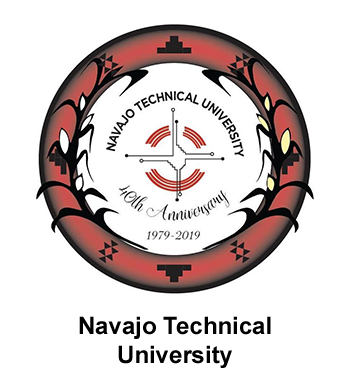
Navajo Technical University - Skyhawks Print the Future
The engineering students from Navajo Technical University are conducting research on additive manufacturing of lunar materials and In-situ resource utilization lunar materials as feedstock for additive manufacturing. The team hopes to develop methods that astronauts could use to 3D print components on demand to support the Artemis program of studying the Moon to establishing a sustained presence for future space exploration.

New Mexico Institute of Mining & Technology in collaboration with Southwestern Indian Polytechnic Institute - Moon Hoppers
The Moon Hoppers team aims to design and prototype a swarm of small bioinspired robots capable of jumping like a locust. This design will take advantage of series-elastic systems in conjunction with mechanical advantage to produce a small robot capable of jumping significantly large distances. This robot swarm will increase the maneuverability of rover systems, as well as movement efficiency, allowing the swarm to traverse various landscapes including lava tubes. Lunar regolith has extremely harmful effects on lunar equipment, and the use of this drone swarm would allow for more extensive/broader data collection, allowing astronauts to be more prepared.

New Mexico Institute of Mining and Technology - Monitoring Miners
The Artemis mission aims to establish a self-sustaining research base on the moon that will pioneer the technology needed for future missions to the Moon and Mars. In the long term, NASA will need structural health monitoring technology for lunar pipelines. This project proposes a network of acoustic emission sensors mounted in a grid formation across areas of interest. Analyzing acoustic emissions through the structure will allow us to detect, characterize, and localize different types of damage. This project will conduct three tests to evaluate the ability of the sensors to detect radiation, corrosion, and abrasion.

Texas Lutheran University - TLU Physics Bulldogs
TLU Physics Team Arti Bulldogs proposes to develop an autonomous exploration system using a set of three ground vehicles synced with an on-board drone. The drone will locate via triangulation with the three ground vehicles, whose positions will be specified relative to a base station. The system will operate autonomously under certain pre-set parameters with the goal of locating potential sources of subsurface ground water. Hidden water sources will be identified using aerially deployed ground penetrating radar, and allow for precise location, which will be further examined using physical extraction mounted on one of the ground vehicles.

Texas State University - The Bobcat CaerusCrete
In this project, a novel, versatile building material is developed to support future massive construction on the Moon and Mars. The material does not need artificial binder (such as cement) to hold aggregate together. Instead, a living microorganism is used to biomineralize granular materials (such as regolith) to gain sufficient strength by converting carbon dioxide to calcium carbonate via photosynthesis. This project can have a significant impact on the Artemis mission because it provides a potential solution to additive construction using regolith and other in-situ resources on the Moon and Mars.
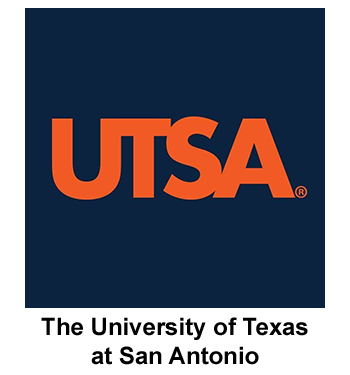
The University of Texas at San Antonio - SJRA Design
Our Lunar Regolith Pavement Brick Producer is designed to be a slow operating, high pressure brick formation system. Currently, there is no existing apparatus of an applicable Technology Readiness Level that can create complete bricks from regolith; however, the current prototype uses an energy intensive process. Our goal is to lower power consumption by applying pressure over longer periods of time; thus, creating a more cohesive brick intended for an underlayment to a landing pad in the Artemis Base Camp. The pad will aid in dust mitigation by providing a barrier between the regolith and the ascent/descent vehicle.

The University of Texas Rio Grande Valley - Rocket Landers
Rocket Landers’, from the University of Texas Rio Grande Valley (UTRGV), is developing an “Autonomous Lunar Descent and Landing Control System” for single-rocket-nozzle propulsive systems. Rocket Landers approach consists of the use of a thrust-vectoring control (TVC) system with simultaneous localization and mapping (SLAM) for navigation during descent. This technology gap is a requirement for the success of Artemis and CLPS missions. Rocket Landers goal is to make a generalized descent and landing control system that can be easily implemented into many different landing platforms with various nozzle arrangements, allowing rapid design of small-scale lunar landers to unique landing sites.
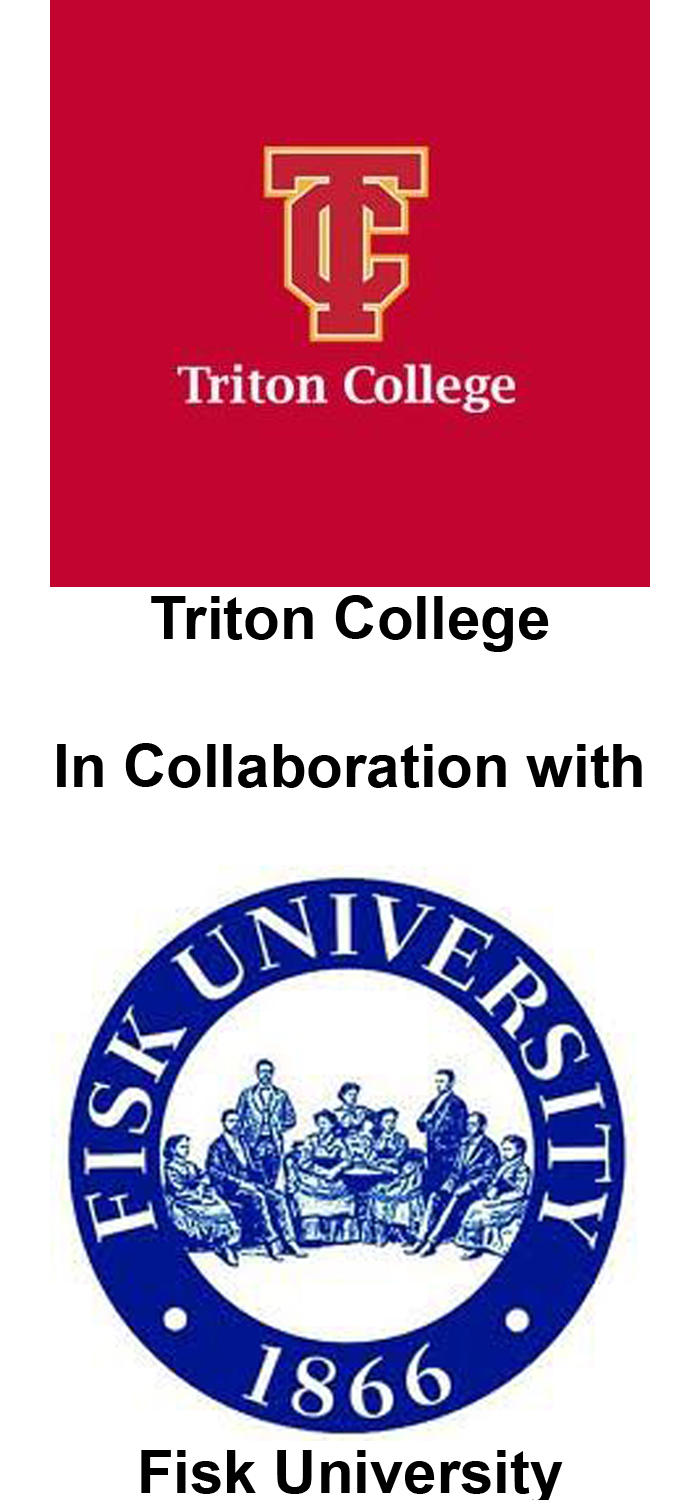
Triton College in collaboration with Fisk University - Fisk Propulsion Research Team
In a collaborative effort, Triton College, River Grove, IL and Fisk University, Nashville, IL will design and fabricate a rocket thruster using high concentration hydrogen peroxide (HTP). The thruster will be paired with in-situ resource utilization of lunar water to produce the HTP. This will reduce the requirement for return flight propellants and allow reallocation of launch vehicle manifest to other purposes.
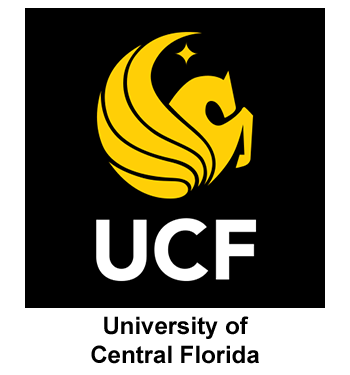
University of Central Florida - LunarMakes3D
The Artemis mission includes multiple components that require safe structural integrity in order to accomplish its objective. The 3D printed nanocomposite sensors will help to facilitate the autonomous detection of the structural integrity of components. Photoluminescent alumina nanoparticles within a polymer matrix, for example, can be used to evaluate stress and detect regions of damage on structural parts. However, a 3D printing method to manufacture these sensors is yet to be determined. This project will focus on developing a 3D printing method with the right polymer matrix and printing parameters to manufacture the nanocomposite sensors.

University of Houston Clear Lake - Moonbusters
Moonbusters For our NASA MINDS project, we, The Moonbusters UHCL, designed “The Bud”. The concept of “The Bud” is to have a light and portable mechanical system that can extend and retract a miniature ROSA solar panel. It is simple, maintainable, and can be manually operated if needed, which is what makes "The Bud" such a versatile system for future lunar missions. Because time and accessibility are valuable, we made it easier to repair, avoiding a complex mechanical component. “The Bud”, when deployed out on the lunar surface, will provide the required solar energy for the Artemis Missions.

University of Houston Clear Lake - UHCL Planetary Pathfinders
With the Artemis program NASA will land the first woman and next man on the Moon by 2024 to explore more of the lunar surface. This mission and future missions to Mars will require swarm assets to be deployed. This proposed project supports the need for coordination and control of swarms of space vehicles required by the Artemis mission. Our involvement in this hands-on design and development of swarm path optimization algorithms is relevant to the Artemis mission, will build a great collegiate learning experience for the team, and will inspire and motivate development for careers in this exciting field.

University of New Mexico - Green Chile Lobos
Artemis Astronauts will need to have freshly grown plants for nutrition as well for mental health. Ideally, fresh food would be available when astronauts arrive to Mars and be maintained continuously on both the moon and Mars without human intervention. The University of New Mexico CHILI HOUSE team will use Swarmie robots and novel water sensors to have robots autonomously water and grow the same varieties of New Mexico chili peppers that will soon be growing on the International Space Station. Architects, biologists, computer scientists, and engineers will collaborate to develop real world tests and simulations to demonstrate our approach.
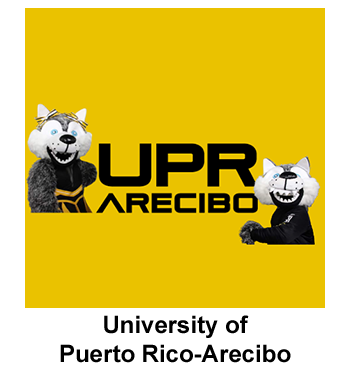
University of Puerto Rico Arecibo - Fenrir Oddity
We want to support the Artemis mission by focusing on methods and algorithms for space recollection of resources and release scientific data to the community. We are developing searching, obstacle avoidance, pickup, and dropoff algorithms to implement on swarm robotics. We will design data visualization dashboards that will make it easier to display all information and statistics. To accomplish the Artemis mission goal of data release and support our project development, we selected Kibana, a data visualization tool to present log and time-based data. Such supports the presentation of performance and system status, perfect for debugging and improving algorithms.

University of the District of Columbia - Firebird Dust Extinguisher
In this research, different lunar soil mitigation technologies have been investigated and the most effective technology has been identified. In the next step of the project, a testbed will be fabricated, and experimental research will be conducted to improve the performance of the selected lunar soil mitigation technology in order to maximize its cleaning rate.

